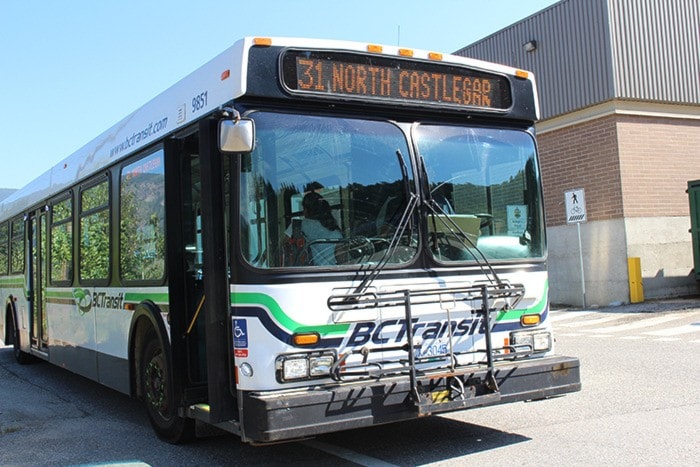Transit use is up in the West Kootenay.
Ridership increased in all three transit systems in the West Kootenay for 2015-2016, according to BC Transit. Kootenay Boundary’s ridership — which includes transit users in Castlegar, Trail and Rossland — increased by 7 per cent, Nelson’s by 10 per cent and Kootenay Lake West’s by 8 per cent.
“We’re happy to see the increases in ridership in that region,” said Jonathan Dyck, communications manager for BC Transit, “and we’ll continue to work with our local partners in the province of BC to enhance service and increase ridership.”
Dyck attributes the increase in ridership to changes made to the BC Transit system. “There have been a number of changes to the system that have supported the increase in ridership in the West Kootenay region,” he said. “One of them was the West Kootenay system integration in July 2013. So that meant having a single rider’s guide for the region and having governance that worked for the entire region, and also having a fair system that was across the region.”
There were also several route improvements made in mid-March of 2015, which Dyck believes have contributed to increased transit use. Saturday service was introduced in Castlegar, with not only local routes, but trips connecting Castlegar and Selkirk College with Trail, Nelson and Playmor Junction. Route 20, which travels between Slocan City and Playmor Junction, had an additional Saturday trip added and its Saturday trip times adjusted to help improve frequency and cut down on wait times. In Nelson, running time was added to Route 10 to “improve on-time performance” between downtown and the Balfour Ferry, and an additional Saturday trip was added to the route.
BC Transit services are paid for through provincial and municipal funding, and fare products. Asked where funding for these increased services came from, Dyck responded, “Services are funded through these three sources, so if there’s going to be an increase in services … or service changes, it has to be sustainable. So they do look at funding sources, so whether it’s the province of BC or local government, or fare products and that. So for increase in service, when we go through this planning, you look at your funding sources, you look at where revenues are going forward, and so revenues from fares do go toward offsetting the costs of the operating system, and if there are surpluses in the region, that goes to support transit services in future years as well.”
For information on West Kootenay routes, including schedules, bus stop locations and fares, visit bctransit.com.
